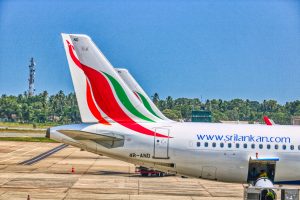Sri Lanka’s tourism industry has commenced its recovery after setbacks suffered due to this year’s economic and political crisis, alongside protest campaigns that ousted President Gotabaya Rajapaksa.
Sri Lanka’s tourism sector plays a significant role in the island nation’s economy, making up 12 percent of the nation’s gross domestic product. Tourism is also Sri Lanka’s third-largest source of foreign exchange, providing much-needed revenue for the government. Tourism brings employment opportunities, adding thousands of direct and indirect jobs to the Sri Lankan economy.
Ministry of Tourism sources disclosed to The Diplomat that the current regime has earned over $1 billion in foreign exchange from tourism receipts since taking office in late July. The ministry estimates that by December 2022, Sri Lanka will have taken in approximately $1.7 billion.
In March 2022, approximately 106,500 tourists arrived in Sri Lanka, a massive increase in tourist arrivals compared with March 2021, when only 4,581 tourists entered the country. Yet tourist arrivals decreased to 30,207 by May 2022 due to the economic crisis in the island nation. The decrease in tourist arrivals due to the COVID-19 pandemic was one of the factors that contributed to Sri Lanka’s dwindling foreign exchange reserves. Hence, economic analysts are of the view that, if there is an increase in tourist inflows, it could have a positive impact on pulling the nation out of its current economic crisis.
Although the government previously predicted that tourist arrivals would increase in July and August, due to fuel shortages only 37,760 tourists visited the country during this period.
Sri Lanka has launched several online programs to increase tourism from alternative destinations. Due to the ongoing war between Russia and Ukraine, resulting in an energy crisis, thousands of tourists from Europe are expected to visit Sri Lanka in November and December.
Meanwhile, Tourism Ministry sources informed The Diplomat that the government has taken many initiatives to revive the tourism industry with novel packages. The Murugan-Shiva Shakthi trail to woo Indian tourists is one such package. As of August, India accounted for 16 percent of the total tourist arrivals.
Meanwhile, “Russian tourists have boosted October arrivals extremely, enabling Sri Lanka to bounce back by 41 percent to 42,026 from a low of 29,802 in September 2022,” a ministry official said. The official also disclosed that Sri Lanka recorded approximately 600,000 arrivals so far this year and expects to attract 200,000 more arrivals in November and December.
Yet, this figure is certainly lower than the anticipated target of one million arrivals and $2 billion in revenue. During the political crisis, before current President Ranil Wickremesinghe was appointed, Sri Lanka saw over 30 flights being pulled out on a weekly basis. Sri Lanka’s political and economic situation resulted in negative travel advisories imposed by certain countries and adverse media campaigns, including negative portrayal of Sri Lanka through social media. That may have contributed to tourists taking their wallets elsewhere.
Now the trend is moving in the opposite direction, with flights being added. Russia’s largest charter airline, Azur Air, resumed direct flight services between Moscow and Sri Lanka last week and over 330 Russian tourists arrived in the first flight. Emirates airline, Qatar Airways, and flydubai have also increased flights to Sri Lanka, considered as a positive move by several economic analysts.
“We can see that the country is currently moving in the right direction and I am sure Sri Lanka would be able to net in revenue in the excess of $2 billion and over 2 million arrivals in 2023, a positive indication,” one analyst told The Diplomat.
According to a senior official of the Tourism Ministry, “Sri Lanka is fielding the largest team of almost 90 local travel sector stakeholders for the World Tourism Market (WTM) in London beginning next week after a lapse of three years.” Hence, the official warned, “it is vital that the current protests should be minimized as these protests will have negative sentiments on Sri Lankan destination promotions.”
As a democratic country, Sri Lanka welcomes peaceful protests, yet analysts worry that the unrest is taking a toll on Sri Lanka’s fragile economy.

































